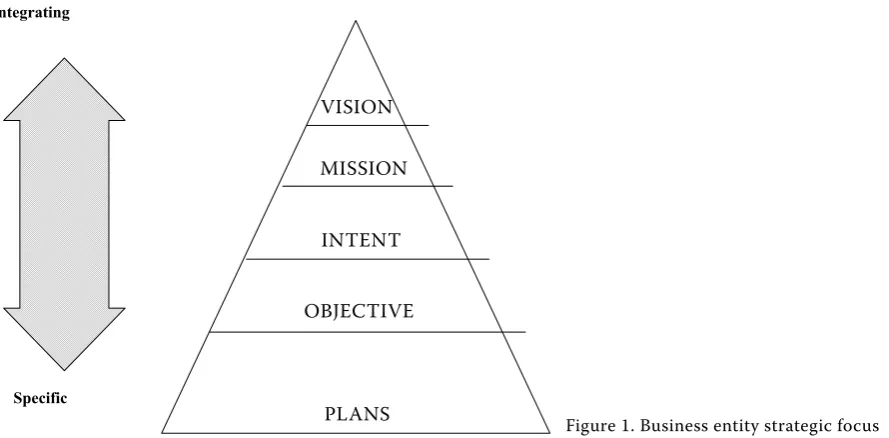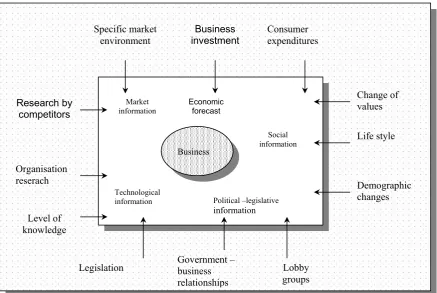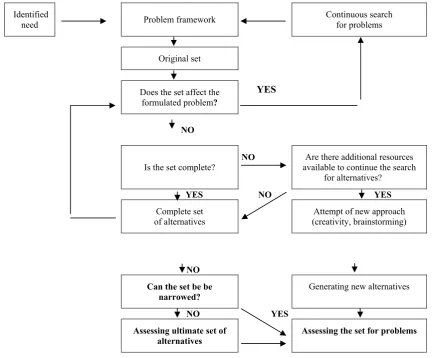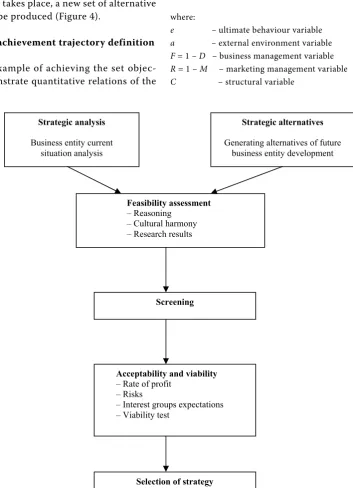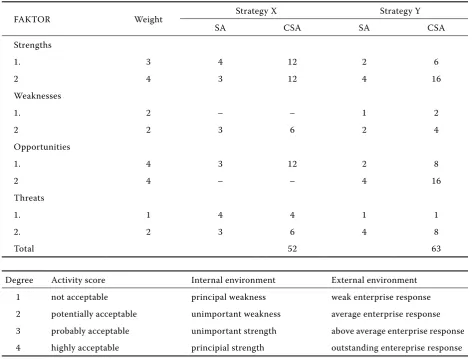INTRODUCTION
Changes, being the only constant values of the today’s turbulent environment, are the cause of necessity to seek the business entities’ “health” factors as an expres-sion of their mutual homoeostasis with the external and internal environment. The business entity health diagnosis, proposals of change in the business entity strategy, and the selection of the best suited variation of the selected strategy have become not only a part of the strategic decision-making of managers but also a part of their everyday diagnostic activity. This contri-bution, produced as a realisation output of the Project NAZV QF 3261, stems from the preceding realisation output. The business entity health diagnostics (Hron 2004) is a methodological starting point for the selec-tion of a suitable business strategy.
METHODS
The objective of the present contribution is an approach framework for the business entity behav-iour model stemming from the methodology of a business entity health diagnostic process (Hron 2004), organisation balance analysis (Hron, Macák 2005), with a particular focus on the approach to a suitable strategy selection. Methods of the theory of organisation systems and quantitative and qualita-tive analyses of projects in the teaching subjects in “Strategic management”, “Management”, “Business operation and economics” and “Theory of man-agement” have been the main focus in the teach-ing programmes at the Faculty of Economics and Management at the Czech University of Agriculture in Prague.
Strategy related factors of business entity structure
and behaviour
Faktory struktury a chování podnikatelských subjektů ve vztahu
k jejich strategii
J. HRON
Czech University of Agriculture, Prague, Czech Republic
Abstract: Each business entity in a turbulent environment aims its behaviour towards achieving defined strategic goals. Strategy formulation means a process towards achieving a model of behaviour which makes use of opportunities in the external environment with optimal use of individual sources so as to satisfy the interests of the main interest groups. The possibility of setting such strategic alternatives is an expression of “health” of a business entity and, at the same time, it is a pre-requisite of success in creating a methodological approach to the selection of the best acceptable variance of solution. Key words: strategy, alternatives, decision-making process, business entity, external and internal environment, efficient beha-viour
Abstrakt: Každý podnikatelský subjekt v turbulentním prostředí směřuje své chování k dosažení svých vymezených stra-tegických cílů. Formulace strategie představuje proces k dosažení takového modelu chování, který využívá příležitostí ve vnějším prostředí při optimálním využití jednotlivých zdrojů tak, aby byly uspokojeny zájmy hlavních zájmových skupin. Možnost vytvoření alternativ strategie je výrazem „zdraví“ podnikatelského subjektu a je zároveň podmínkou úspěchu ve vytvoření metodického postupu pro výběr nejpřijatelnější varianty řešení.
Klíčová slova: strategie, alternativy, rozhodovací proces, podnikatelský subjekt, vnější a vnitřní prostředí, efektivní chování
RESULTS AND DISCUSSION
The project of a business entity and its behaviour model requires, above all, team work and respecting the phase approach. The analyses results thereby obtained suggested that the project be structured in 10 phases:
Business entity identification
This fundamental and starting phase should in-clude
– business entity establishment initiative;
– its capital and technical availability or equip-ment;
– existence of interest groups.
A particular definition of the interest groups is of great importance as the extent of the satisfaction of their needs and requirements is a criterion of success of the given business entity.
FORMULATION OF VISION
AND OBJECTIVES OF A BUSINESS ENTITY
[image:2.595.74.519.546.765.2]The mission of a business entity is an integral part of a strategic focus which sets the reason and sense for which the given business entity exists. Generally, they are the vision and mission of the business entity, in a more concrete sense they are the intention and objectives. All these elements of the strategic focus of a business enterprise are arranged hierarchically (Figure 1).
Vision of a business entity indicates what a business entity should be; it is focused at the future, it repre-sents aspirations without any detailed specification of the ways and means of their fulfilment.
Mission of a business subject is a formulated and written vision. The vision verbalisation means its relative concretization and formulation of answers to questions, such as
– What is the reason of the existence of a business entity, its sense?
– Which obligations the business entity has to vari-ous interest groups?
– What emphasis should be put on the satisfaction of the interests of separate interest groups? – What is unique in our business entity?
– Which changes may take place within the future 3–5 years?
– Who is the main client, which market segment? – Which are the main products of the business entity
today and in the future?
– Which are and which will be its most important economic interests?
– Which are the fundamental values and norms of the business entity?
Intent of a business entity is another step in the vision concretization. This include financial and non-financial interests of various groups on both motivational and viability levels.
Objectives mean an operational definition of the intentions. They define the relatively general conclu-sions and they define accurately what must be achieved so as to make the conclusions realistic.
Integrating
Specific
VISION
MISSION
INTENT
OBJECTIVE
Plans are a concrete description of ways of achieving the goals, including ways, terms and personal respon-sibilities, business entity source allocation, etc.
The mission defines why a business entity exists, and it is a guideline for what it should do. The for-mulated mission of a business entity is an important element of strategic management as it provides the managing workers as well as the rank-and files with a clear awareness of the purpose and a feeling of ap-purtenance with the business entity, it is the driving force, an “invisible hand” which directs the business entity in its development. The mission, objectives, strategies and even the culture must be modified with respect to the changes of the above elements. Consistency amongst these five elements is an ever-lasting task.
External environment analysis
A successful development of a business entity is based upon the establishment of a homeostasis with the internal and external environment and that is why its thorough understanding and its qualitative and quantitative assessments are inevitable (Hron 2004). The external environment characteristics depend upon the definition of the relevant factors of the environment which can affect the business entity.
The business entity external environment is sim-ply anything that is outside the entity, however, for the needs of a strategic analysis only those circum-stances are important that have a direct effect upon the business entity (i.e. the relationship between the circumstances and the business entity).
The individual circumstances can be divided into four segments, as follows:
Social segment
(involving circumstances of the way of life, including life values)
The object of an analysis can be, for instance – demography
– income distribution – population mobility – lifestyle
– education level
– approach to work and leisure time
Technological segment
(involving circumstances related to the development of the means of production, materials, processes, know-how)
The analysis is concerned, for instance, with – government expenditures for research and
sci-ence
– new discoveries, inventions, patents, – technology transfers
– rate of ageing of the means of production
Economic segment
(involving circumstances such as cash flow, goods, services, information, energies)
The analysis deals with, for instance – GDP development trends
– business entity life cycle – funds availability, interest rate – inflation
– unemployment
– energy availability and costs
Political (administrative-legislative) segment (involving circumstances connected with political power distribution, including local and foreign gov-ernments)
The analysis takes into account – government stability
– foreign trade regulation – tax policy
– competition legislation – environment protection
The analytical model presented in Figure 2 is a blueprint for the external environment detailed analysis.
Internal environment analysis
Harmony between the business entity and the in-ternal environment is in fact a result of the harmony between the exploitation of the business entity’s resources and its processes with the environment development trends (Tichá 2001). The analysis in-volves:
– Analysis of the level of processes, the level of the current resources and their arrangement (in case of restructuring).
– Analysis of the potential resources and processes (in case of a new project).
Among the internal environment circumstances belong, e.g.:
– type of ownership relations
– level of natural and technical resources – level of technological processes
– manual workers’ qualification – marketing management level
– structural arrangement of separate elements
Determining fundamental resources and processes
The ultimate behaviour of a business entity is a function of its structure, of the level of separate
pa-rameters characteristic of technical and human ele-ments, of their system arrangement and managerial interconnection (Hron 2003). Such a relationship can be simplified in the following chart and a quantitative relationship (Table 1).
The quantitative relationship of the above variables is given by the equation
a R F C
c
e �
� � �
) ( 1 where:
e – variable of ultimate behaviour a – variable of external environment F = 1 – D – variable of business entity
R = 1 – M – variable of marketing management C – structural variable
Political –legislative
information
Technological information
Social information Market
information Economicforecast
Business
Legislation Government – business relationships
Lobby groups
Change of values
Life style
Demographic changes Level of
knowledge Organisation reserach
Research by competitors
Consumer expenditures Business
investment Specific market
[image:4.595.80.518.68.361.2]environment
Figure 2. External environment analysis model Source: Hron 2003
Table 1. Business entity ultimate behaviour
Extrenal environment a
System of organisation of business entities (firms)
Natural, technical and human resources – a structural variable C
Company management variable D
Marketing management variable M
alternatives which will make it possible for the busi-ness entity to acquire and strengthen its position with respect to future development. As the exter-nal environment changes are rapid and frequent, the structure of threats and opportunities changes constantly with them which requires to generate sufficiently quickly strategic alternatives as a first step in responding to the changes (Figure 3). Among the elementary principles of setting alternatives, there are:
– Variability of suggested alternatives
Only a wide scope of suggested alternatives allow to emphasize the high qualities of some of them through mutual benchmarking. In the process of benchmarking, the list of the alternatives usually dwindles since some of them appear to be merely other alternatives of the given topic.
– Difference between the set alternative and current strategy
A need to assess the current strategy in the process of determining its difference from the suggested strategy is an asset among others.
Determining the organisation arrangement
The organisation arrangement of business entities depends upon the level of factors of the establish-ment of organisation and manageestablish-ment units (Hron 2004).
Defining basic organisation norms
The proposed structural and process arrangement must be formalized, the individual organisation norms must be defined so as to make the project realizable and viable.
Selecting suitable project and strategy variations
One of the fundamental requirements of strategic management – preparing for the future using the potential of the present – requires generating of
Identified
need Problem framework Continuous searchfor problems
Original set
Does the set affect the formulated problem?
NO
Is the set complete? NO available to continue the searchAre there additional resources for alternatives?
YES NO YES
Complete set
of alternatives (creativity, brainstorming)Attempt of new approach
NO Can the set be be
narrowed? Generating new alternatives
NO YES
Assessing ultimate set of
alternatives Assessing the set for problems
[image:5.595.84.518.372.730.2]YES
– Implementation inconvenience
The easier the introduction of the alternative way the less the probability for the suggested solution to leave the current behaviour form.
– Relation to set objectives
Inventive and ambitious alternatives often result in increased expectations and objectives. Even a new formulation of long-term objectives may be among the consequences.
Generating alternatives is not a simple linear proc-ess. The assessment of different alternatives can result in a change of criteria for strategic decision-making. If such a change takes place, a new set of alternative solutions must be produced (Figure 4).
Set objectives achievement trajectory definition
A concrete example of achieving the set objec-tives can demonstrate quantitative relations of the
ultimate behaviour of business entities and the time delay (Hron 2005).
Of that
where:
e – ultimate behaviour variable a – external environment variable F = 1 – D – business management variable R = 1 – M – marketing management variable C – structural variable
Strategic analysis
Business entity current situation analysis
Feasibility assessment
– Reasoning – Cultural harmony – Research results
Screening
Acceptability and viability
– Rate of profit – Risks
– Interest groups expectations – Viability test
Selection of strategy
Strategic alternatives
[image:6.595.134.488.225.714.2]Generating alternatives of future business entity development
Figure 4. Strategic alternatives assessment framework Source: Hron 2004
�
�
�
a a a�
C
e� � �r ��r
�
�
�
� �Re�
�C a Fe
�
F R�
aC C
e �
� � �
strategy formation (as early as in the process of the strategy formation, the possibilities of its imple-mentation must be accounted for) and yet it varies substantially in a number of aspects (Table 3).
Strategy implementation may involve such processes as: market change, new organisation units establish-ment, production capacities closedown, new labour recruitment, price policy changes, remuneration sys-tem change, new check-up procedures introduction, new facilities construction, labour re-qualification, manager transfer within enterprise, introduction of an information system, etc. There is no uniform approach; implementation of a particular strategy depends upon the type and age of the enterprise, upon the type and age of the market, upon the resources available, and upon a number of other circumstances which make the implementation of any strategy a unique operation.
Adequate exploitation of the business entity’s per-sonnel potential is of fundamental importance for the successful strategy implementation. The suggested where:
et – ultimate behaviour variable in relevant year fo – initial deviation of ultimate behaviour from target state
where:
ft – ultimate deviation of targeted ultimate behaviour
Strategy implementation
[image:7.595.62.538.83.442.2]Strategy implementation is the most complex phase of the strategic management process and it is of para-mount importance for the success of the selected strategy. This phase is very closely linked with the Table 2. Strategic alternatives selection grid
FAKTOR Weight Strategy X Strategy Y
SA CSA SA CSA
Strengths
1. 3 4 12 2 6
2 4 3 12 4 16
Weaknesses
1. 2 – – 1 2
2 2 3 6 2 4
Opportunities
1. 4 3 12 2 8
2 4 – – 4 16
Threats
1. 1 4 4 1 1
2. 2 3 6 4 8
Total 52 63
Degree Activity score Internal environment External environment 1 not acceptable principal weakness weak enterprise response 2 potentially acceptable unimportant weakness average enterprise response 3 probably acceptable unimportant strength above average enterprise response 4 highly acceptable principial strength outstanding entereprise response Notes: SA = activity score, CSA = total activity score (weight x SA)
Source: Hron 2004
�
�
�
�
�
�
t ot CCFa R CF R f
e � � �
� �
� �
1
�
�
�
CF R�
f f
t t o
� � �
strategy can be successfully made viable only in mutual harmony of the roles of the managers and leaders.
CONCLUSION
Quantitative and qualitative analyses of struc-tural arrangement of business subjects, factors and standards and their resulting behaviour prove clearly that each business enterprise is a unique entity. Its managers´ qualification plays a decisive role.
The well known equation holds invariably: efficient behaviour of business entities depends upon the qualification of its managers who have the know-how, the will, who are able and can keep pace.
REFERENCES
Hron J. (2003): Faktory ovlivňující změny chování podniků v konkrétním prostředí (Factors affecting business behaviour changes in concrete environ-ment). Acta oeconomica et informatica, 6 (1): 24–28.
Hron J. (2004): Diagnosis of business health Agricul-tural Economics – Czech, 50 (12): 535–542. Hron J. (2005): Knowledge management. Conference
Farm Management, Brno.
Hron J. (2005): Znalostní a strategický management. (Knowledge management and strategic manage-ment), Agrární perspektivy XIV, ČZU, Praha; ISBN 80-213-1372-2.
Hron J., Macák T. (2005): Organizační chování (Or-ganization behaviour). Agrární perspektivy XIV, ČZU, Praha; ISBN 80-213-1372-2
Penrose E.T. (1980): The Theory of the Growth of the Firm. M.E. Sharpe, Inc., White Plainms, N.Y.: 76–80.
Stewart T.A. (1997): Intellectual Capital: The New Wealth of Organisations. Brealey, London. Tichá I. (2001): Knowledge: A Source of Competitive
Advantage in Global Economy. Conference pro-ceedings, Agrarian Perspectives X, ČZU, Praha. Mintzbergh H. (1996): The Strategy Process,
Con-cepts, Contexts,Case. Third Edition, Price Hall In-ternational, Inc., New Jersey; ISBN 013853813.
[image:8.595.62.528.83.211.2]Arrived on 30th September 2005
Table 3. Comparison of strategy formulation process and its implementation
STRATEGY FORMULATION STRATEGY IMPLEMENTATION
Allocation of forces prior to action Forces management in course of action Process aimed at merit Process aimed at efficiency
Process primarily intellectual Process primarily operational
Need of intuition and good analytical competence Need of skills in human resources motivation and management Coordination of several individuals Coordination of a number of people
Contact address:
Prof. Ing. Jan Hron, DrSc, Česká zemědělská univerzita v Praze, Kamýcká 129, 165 21 Praha 6-Suchdol, Česká republika
